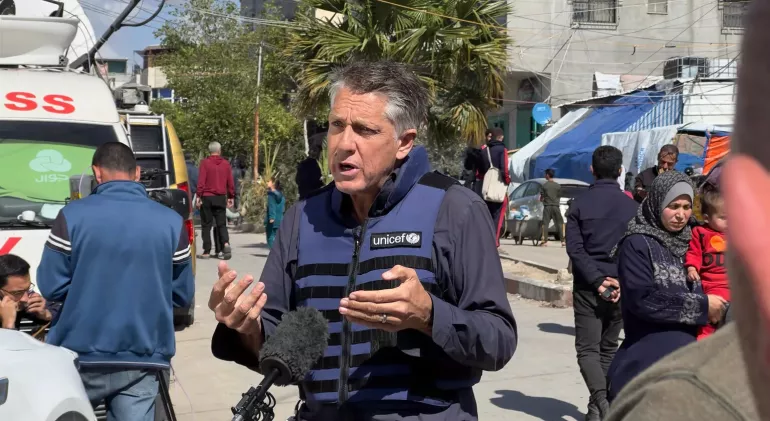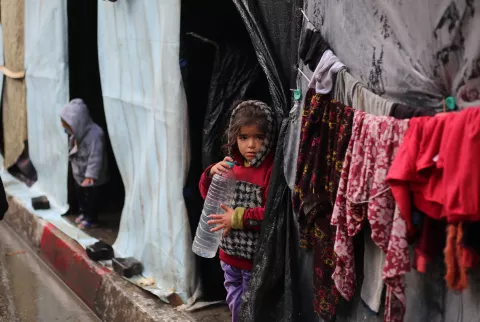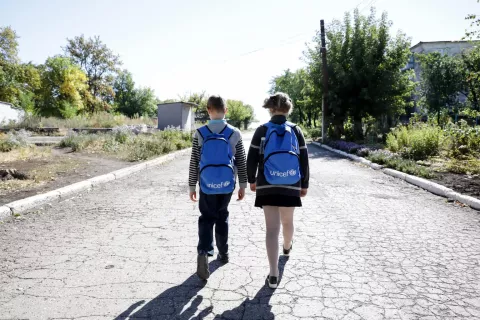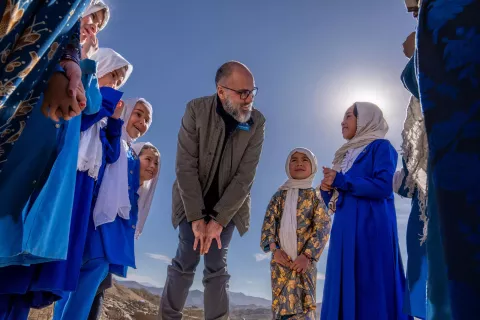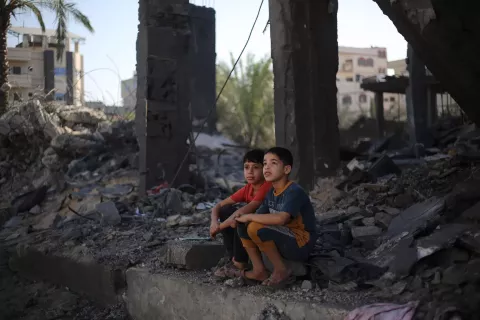I wasn’t ready for the devastation I saw in the Gaza Strip when I was there a few months ago. I wrote then that in my 20 years with UNICEF I’d never seen anything quite like it, as panicked families fled one bombardment after another. The desperation of families constantly on the move – families who already had nothing – was palpable.
Somehow, things have gotten much worse. There’s chaos and ruin everywhere.
Rafah is almost unrecognizable now – a city of children and families in despair. Everywhere I look there are people in the streets, taking shelter in public buildings or any other space they can find. It’s sometimes hard even to move around – so many people are crammed into such a relatively small area. Imagine a place twice as densely populated as New York, but without the high rises to accommodate the people there.
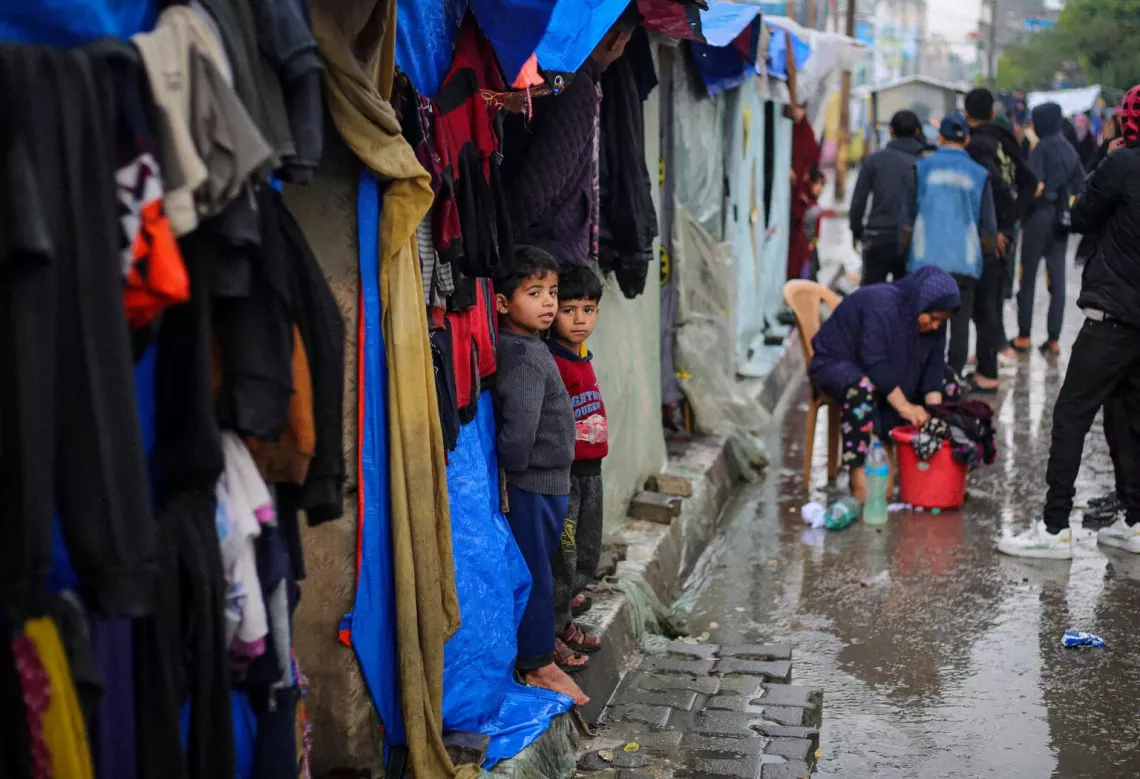
This kind of congestion inevitably brings with it an almost unbearable concentration of suffering. Everywhere you look in a hospital or clinic you see another child who bears the brutal wounds of war. In one hospital I visited, Rafah’s European Hospital, I spoke with a young boy and his sister. The boy had lost one of his eyes. His sister flashed a beautiful smile but was also incredibly shy because her face has been so disfigured by the bombings. Across the corridor was a mother who had just had her leg amputated; she was laying in a bed next to her critically injured son. Her husband was downstairs; he has had two limbs amputated. Down the corridor, there were two 9-year-old girls who told me they used to have a lovely home in Gaza City. Now, they’re sheltering in a crowded hospital corridor with nine other members of their family, the only privacy for them some sheets and blankets they’ve strung up.
Dignity denied
It's not hard to imagine what such overcrowding means for basic hygiene. Global standards for humanitarian emergencies say there should be no more than 20 people using a single toilet. In Rafah, there is one roughly toilet for every 850 people. For showers, it’s several times that number. The dignity being denied tens of thousands of young women is of a kind we haven't really seen before.
When I was in Gaza in November, families and children were relying on around three litres or less of water per person per day. Today, on average, households surveyed in the Gaza Strip have access to less than one litre of safe water per person per day. That’s one litre per day for everything – drinking, washing, cooking. The impact of this on children is particularly devastating because children are also more susceptible to dehydration, diarrhea, disease, and malnutrition.
Indeed, the only thing more lacking than water in the Gaza Strip might be food. You see the evidence of the acute shortages of nutritious food everywhere you look – in the faces of the desperately thin children, through the heartbreakingly common hand-to-mouth gesture.
Before this war, child wasting in the Gaza Strip was rare, with less than one per cent of children under 5 years of age acutely malnourished. Today, in the north, one-in-three children under 2 years are acutely malnourished. Families might have some canned food – beans, or something like that. But we’re talking a can a day, being shared amongst family members. I spoke with one family who were taking in as many as five other families and sharing what little food they had with them. They share even their last pieces of stale bread.
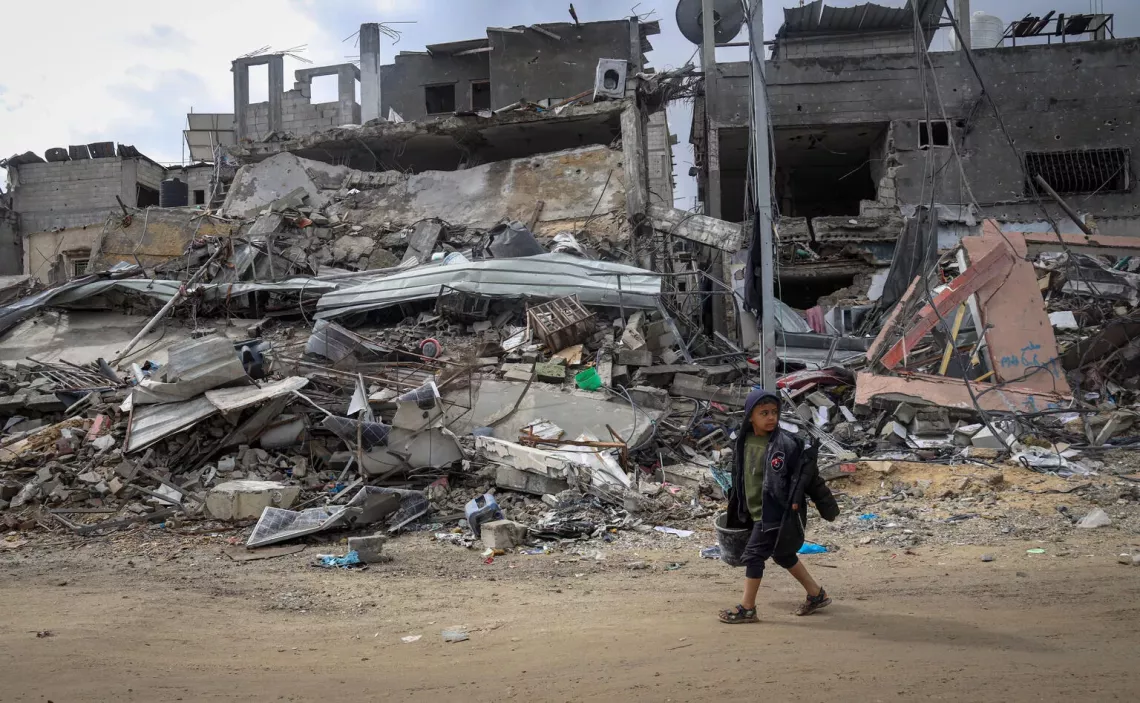
Courage amid catastrophe
Despite the shattered nerves and annihilation of almost everything around them, I’ve seen again and again examples like this – of extraordinary generosity, of people opening their doors. Brave, generous, and tireless Palestinians continue to support one another. But people are only just holding on – there’s only so much they can take, and there’s only so little they can manage with if they are to survive this war.
One of the cruelest things in this conflict is that aid is available. This unfolding man-made nutritional catastrophe could be rapidly reversed by opening more road crossings to populations facing imminent famine and by ensuring safe and unimpeded access for humanitarian organizations. When I entered the Gaza Strip a few weeks ago, there was a backlog of hundreds of trucks with lifesaving humanitarian aid waiting to enter Gaza.
Despite the backlog, UNICEF and our UN partners are still managing to get in some of the most important kinds of supplies: nutritional food for the most vulnerable children, water, generators, vaccines, medicines, tents, blankets. But because of the restrictions it’s not nearly as much as we want to get in or as much as people need. If we’re going to avoid more children dying of malnutrition, of dehydration – horrendous ways for a child to die – then we need to get more aid through on the roads.
Hope hanging by a thread
People often ask me if there is still hope. There is, but it’s hanging by a thread. Mothers tell me how they have lost loved ones, their homes, their ability to regularly feed their children. They tell me that all they have left now is hope – especially for a lasting ceasefire. The endless talk of a large-scale military operation in Rafah – a city of around 600,000 girls and boys – risks severing that remaining thread of hope. Rafah is home to some of Gaza’s last remaining hospitals, shelters, markets and water systems. The devastation that would be wrought by a large-scale military operation is almost unthinkable.
I’ve spoken with parents who ask me to tell the world what’s going on, what’s happening to them. They’re afraid that their voices are not being heard. They think the outside world must not know what’s going on – how desperate things have become – because how could it still be happening otherwise? It’s a very good question.
If we’re to give these families hope for a better future – for any kind of future – then a lasting ceasefire is essential. And it must be substantive, not symbolic. The hostages must be allowed home. Humanitarian aid must be allowed in, unimpeded. The people of Gaza must – and I can’t believe this actually needs to be said – be allowed to live.
The documented horrors in Gaza are a part of one of the many dark episodes in modern history. Time is running out for humanity to write a different, more hopeful, chapter.
James Elder is UNICEF’s spokesperson. Follow him @1james_elder
For more on the situation in Gaza and UNICEF’s response, click here.

